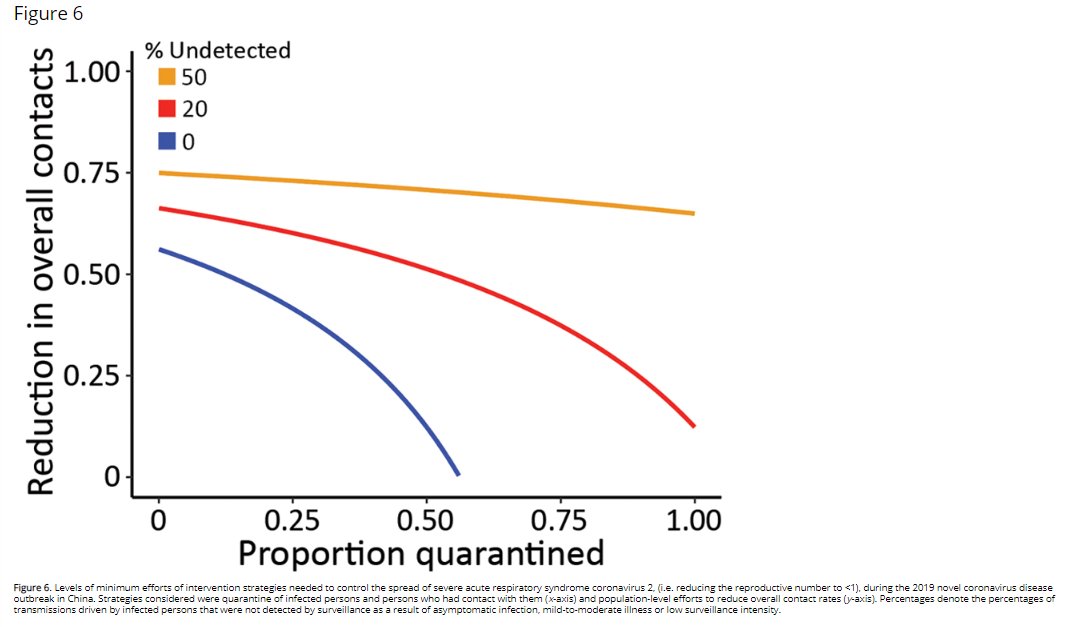In a newly published study, modelers at @LosAlamosNatLab look at #SARSCoV2 transmission in China and conclude it spread faster and had a higher R0 than most previous studies have estimated. https://wwwnc.cdc.gov/eid/article/26/7/20-0282_article">https://wwwnc.cdc.gov/eid/artic...
Using expanded case data from provinces outside Hubei, authors estimate a growth rate of 0.29-0.3/day, for an epidemic doubling time of ~2.4 days. They extrapolate back to estimate the virus emerged Dec 16-20, 2019 (with lots of uncertainty around this).
While their main findings didn& #39;t incorporate asymptomatic cases, when they used sensitivity analyses to explore the effects of asymptomaticity, that they found it moved their estimate of emergence to an earlier date but didn& #39;t affect growth rate estimates.
The implications of a higher R0 are:
-We& #39;d need to identify & isolate/quarantine a greater proportion of cases through contact tracing efforts, and
-We& #39;d need to vaccinate a greater proportion of the population to achieve herd immunity.
-We& #39;d need to identify & isolate/quarantine a greater proportion of cases through contact tracing efforts, and
-We& #39;d need to vaccinate a greater proportion of the population to achieve herd immunity.
So one of the takeaways here (as with so many of these modeling studies) is that "high levels of social distancing efforts will be needed to contain the virus" and "early and effective surveillance, contact tracing, and quarantine" will be critical to interrupt transmission.
As with all these studies, there are limitations and assumptions. For example, these authors rely on data from early Chinese case reports, which probably skew toward those with more serious disease.

 Read on Twitter
Read on Twitter



